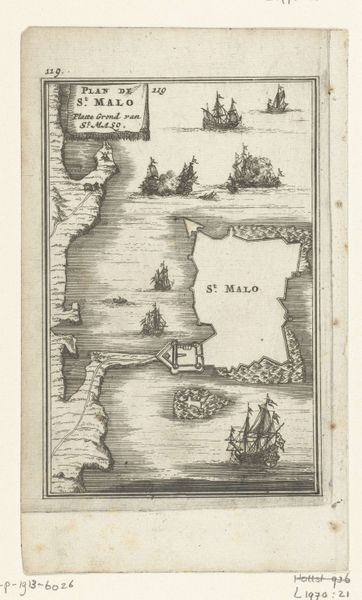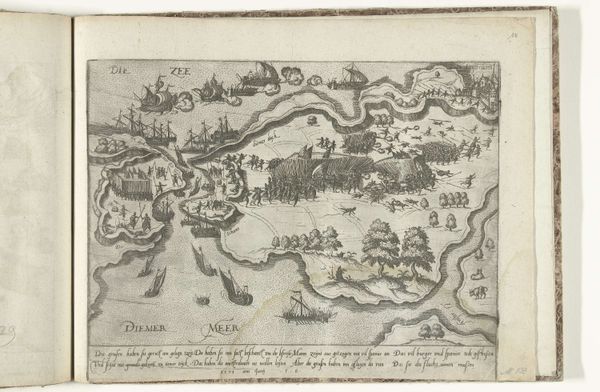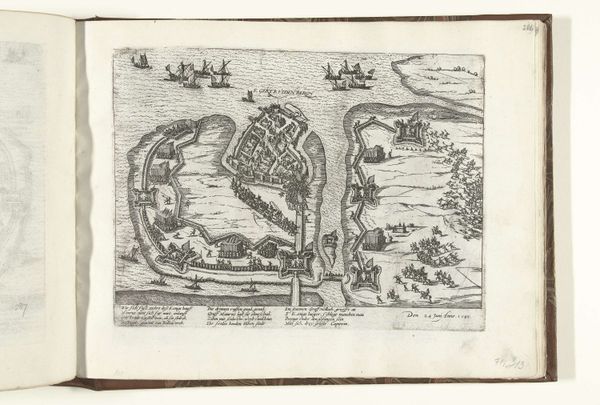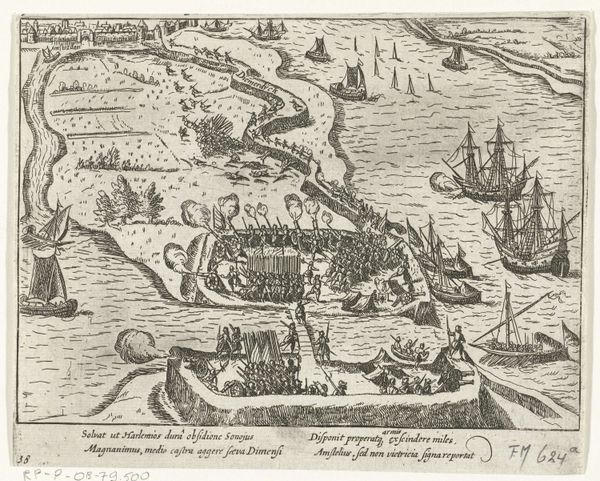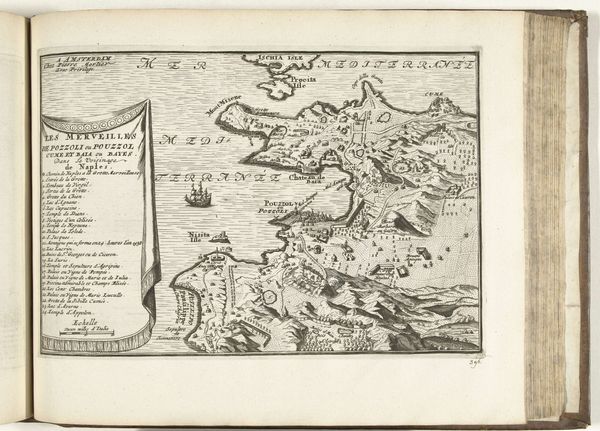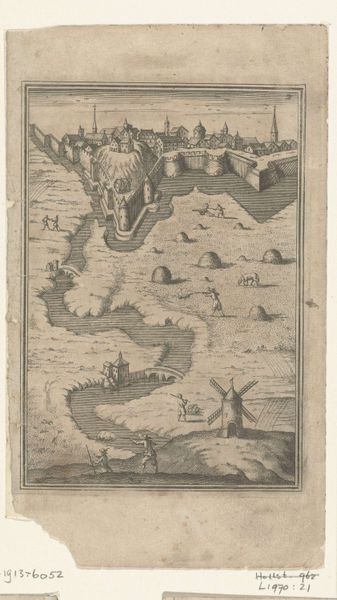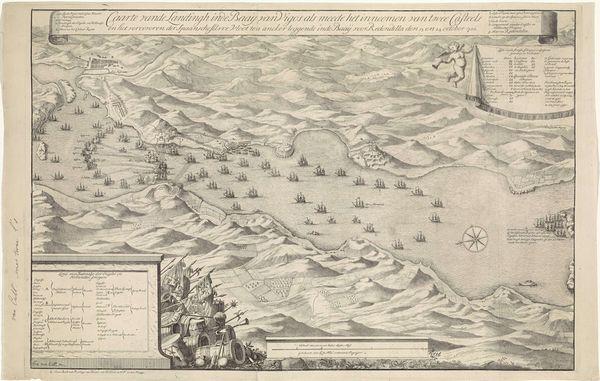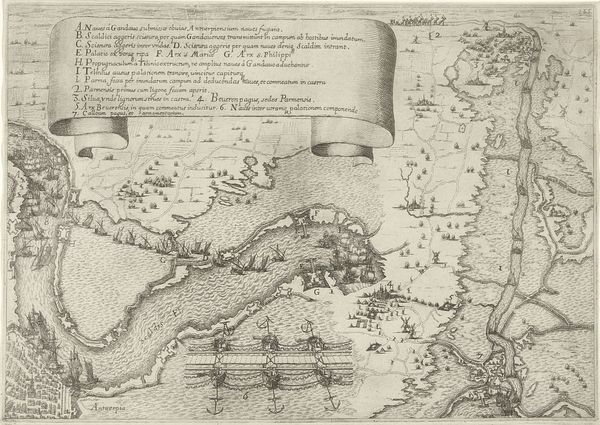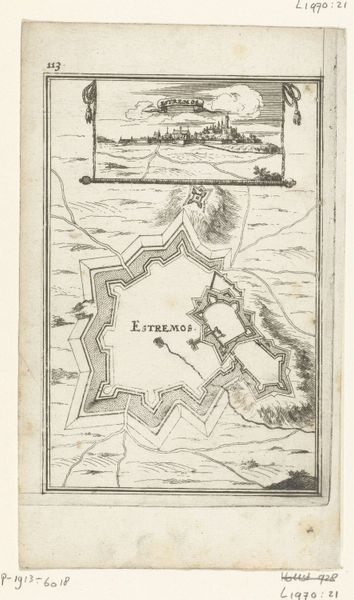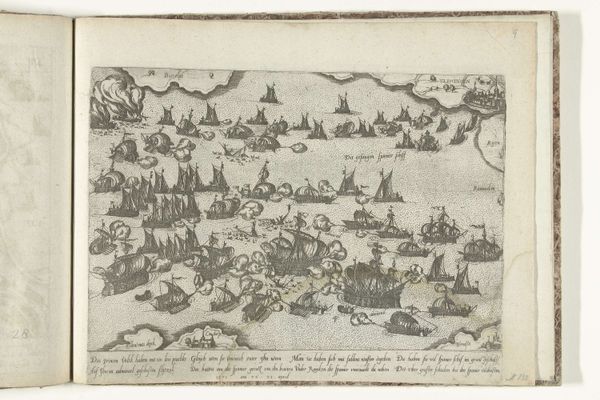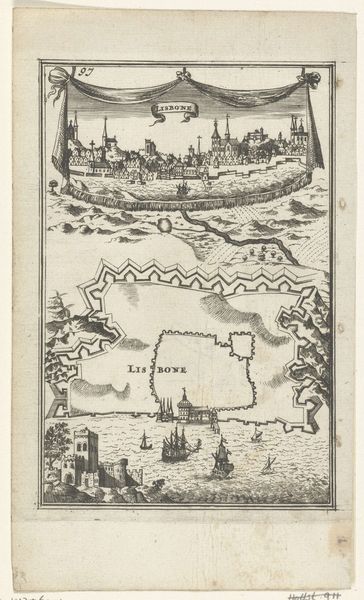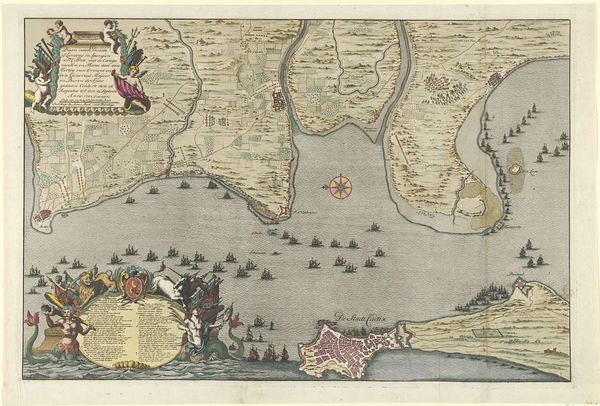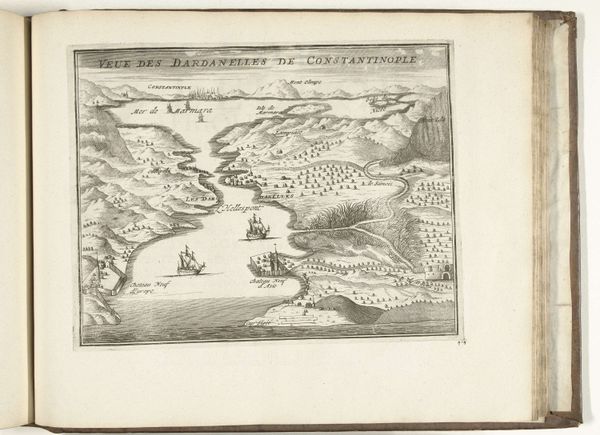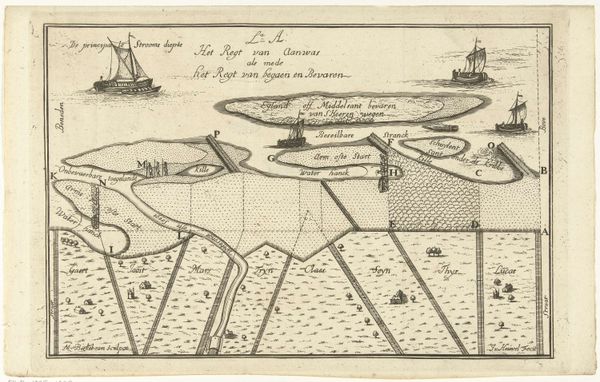
Illustratie voor 'Den Arbeid van Mars' van Allain Manesson Mallet 1672
0:00
0:00
drawing, print, ink, engraving
#
drawing
#
baroque
# print
#
landscape
#
ink
#
pen-ink sketch
#
engraving
Dimensions: height 186 mm, width 112 mm
Copyright: Rijks Museum: Open Domain
Editor: We’re looking at an illustration by Romeyn de Hooghe from 1672, titled "Illustration for 'Den Arbeid van Mars' by Allain Manesson Mallet.” It’s a pen-ink sketch and engraving, quite detailed for its size. I find the contrast between the delicate linework of the sea and the dense hatching of the land very compelling. What structural elements stand out to you in this piece? Curator: What intrigues me immediately is the meticulous representation of space. Observe how de Hooghe utilizes the conventional etching and engraving techniques, rendering a comprehensive, almost clinical portrayal. The linear precision isn’t merely illustrative; it’s analytical. Consider how the hatching articulates form and how the variations in line weight describe depth. Editor: Yes, the linear precision you mentioned is striking! The lines around the fortress and the ships are so deliberate. Curator: Precisely. Every mark contributes to the spatial logic of the composition. How do the formal choices reinforce the purpose of the work as an illustration for a treatise on warfare? Editor: I hadn't considered that directly, but now I see how the strategic placement of the fort, the detailed depiction of the harbor… It all highlights military planning. Curator: And isn’t that precisely the intent? The form dictates the function. We are presented with a visual architecture, where the fort's structure and geographic situation become legible as a system of defense, accessible and demonstrable through de Hooghe's structured artistry. What does this tell us about the period's emphasis on reason and order, visually expressed? Editor: It definitely reflects the rationalism of the Baroque period. It's less about emotion and more about communicating information effectively and accurately. It’s amazing how much a seemingly simple drawing reveals about both art and societal priorities. Curator: Indeed, a study of this piece allows for deep observation not only into the science of war, but also the formalism present in the late 17th century artistic vision.
Comments
No comments
Be the first to comment and join the conversation on the ultimate creative platform.
